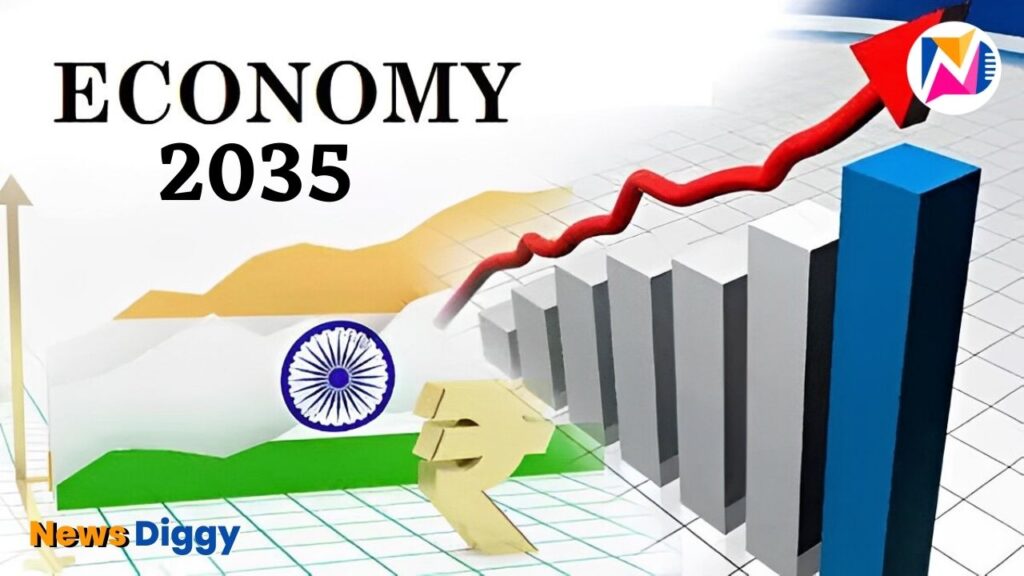India to become $10 trillion economy by 2035. With whom India will become the third economic super-power by 2037. According to the Center for Economic and Business Research (CEBR), a leading London-based consultancy. A report released on Monday said the world is heading for a recession. However, over the next five years, India’s annual GDP growth rate is expected to average 6.4%, after which it is expected to grow by an average of 6.5% over the next nine years.
“This growth trajectory will see India rise from fifth in the World Economic League table in 2022 to third in the global rankings by 2037,” he said. According to the report, the pandemic has had a particularly devastating impact in absolute terms, with India having the third highest death toll in the world, yet the economy has bounced back.
“By 2035, we predict that India will become the third largest economy, worth $10 trillion. While there are political factors that could hold India back, it has demographics on its side,” the report said. The report also downplayed concerns about high inflation, saying it remained lower than most other major economies.
India to become $10 trillion economy by 2035
Much of India’s current rate of inflation reflects higher food prices, a volatile item that also accounts for a larger share of the consumption basket than any other G20 country, CEBR added. Earlier this year, India became the fifth largest economy, overtaking the UK this September. The size of India’s economy in terms of “nominal” cash was $854.7 billion, compared to $814 billion in the United Kingdom, a Bloomberg report claimed.
According to the National Statistics Office (NSO), India’s gross value added (GVA), which is GDP minus taxes on net product and reflects supply growth, grew by 12.7 percent from April-June 2022. While India has seen steady growth, the UK is struggling with its highest inflation rate in decades. The Bank of England has predicted that the UK is already in a recession that could last until 2024.
Economic growth in 2022
At a time when many major economies around the world were struggling with the effects of the COVID-19 pandemic, India was showing signs of stability. The country’s economy grew by an impressive 13.5 percent in the June 2022 quarter (Q4FY22), even as the world’s major economies, the US and UK, witnessed slumps. In the September quarter, the country’s economy recorded a growth rate of 6.3 percent.
Now another question is why India is important in today’s global economy?
Economic history shows that in the past the global economy developed depending on the higher growth rate produced by some of the largest economies. In the first half of the last century, it was the higher growth rate of the US economy that contributed to the progress of the global economy. Higher GDP growth and higher incomes in the US encouraged US imports from other countries. Exporting to the US means increased economic growth and increased income in other (exporting) countries.
Over the past few decades, global economic growth has been well supported by China’s gigantic growth rate of around 9%. But for China, it made a difference. Its growth was driven by high levels of domestic investment rather than high domestic consumption. This means that when China invested, China produced and China exported. Here, the world economy, while receiving Chinese goods, transferred the income to China.
Now, China’s economic growth is low, around 6.7%, which is the new normal for him. On the other hand, India emerged as the new fastest growing economy among major economies (with a growth rate of around 7.6%). India’s share of world GDP and its contribution to global GDP growth
The change in this growth profile means that India’s contribution to global economic growth has increased. In terms of GDP in purchasing power parity, China is the largest economy, the US is the second largest, and India is the third largest.
India’s share of global GDP increased from 4.8% in 2001–07 to 7.0% in 2014–15, according to the 2016 Economic Survey.
If China’s growth rate is 6.7%, its contribution will be the largest because it is the largest economy. On the other hand, US GDP growth is around 1%, and at this low rate, its contribution to global GDP growth will be low (even though it is the second largest economy). Here, with 7.6% growth, India contributes more to world economic growth than the US.
The Economic Survey 2016 reports that India’s share of global GDP growth at PPP increased from an average of 8.3 percent during the period 2001 to 2007 to 14.4 percent in 2014. India’s increased contribution to world GDP growth is due to China’s new rebalancing.
Another very important element of India’s growth is that it is making progress in its own consumption rather than depending on world consumption. The low share of exports in the world suggests that India is self-sufficient in deriving its growth from the consumption of its own population. If the world economy goes into recession, it will affect China badly, but its impact will not be as severe on India, as India’s economic growth is driven by domestic consumption.




